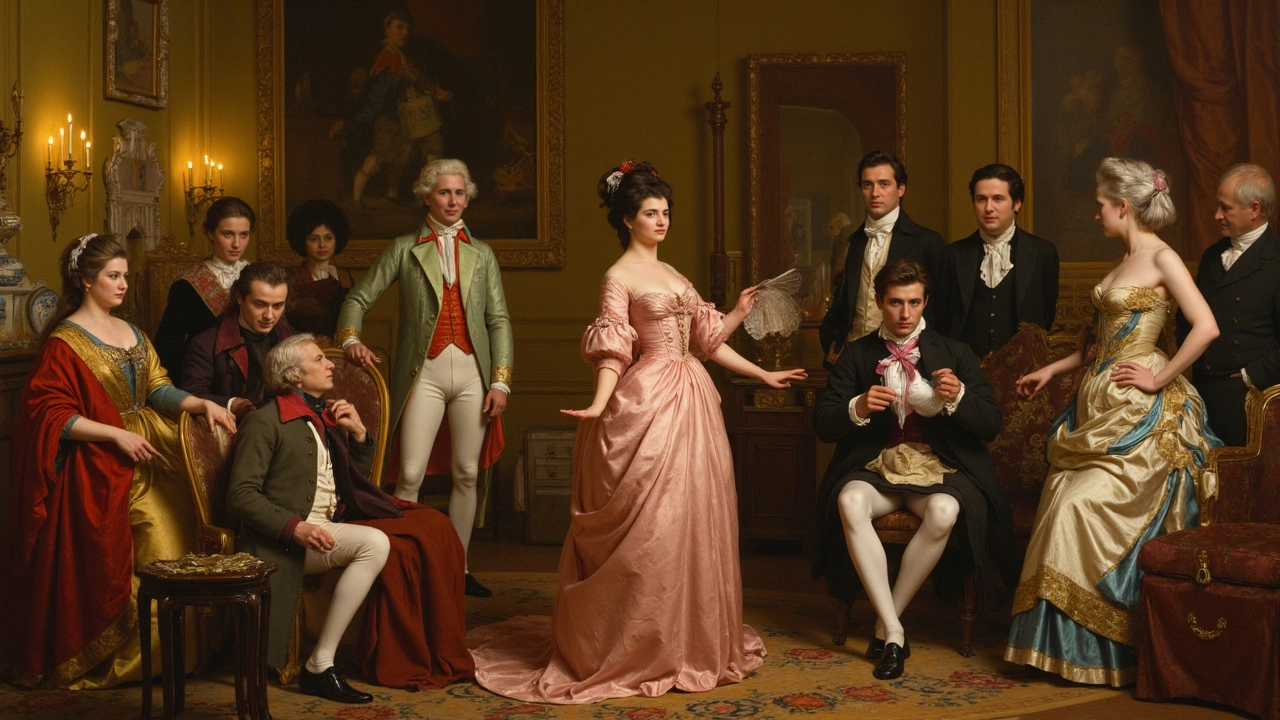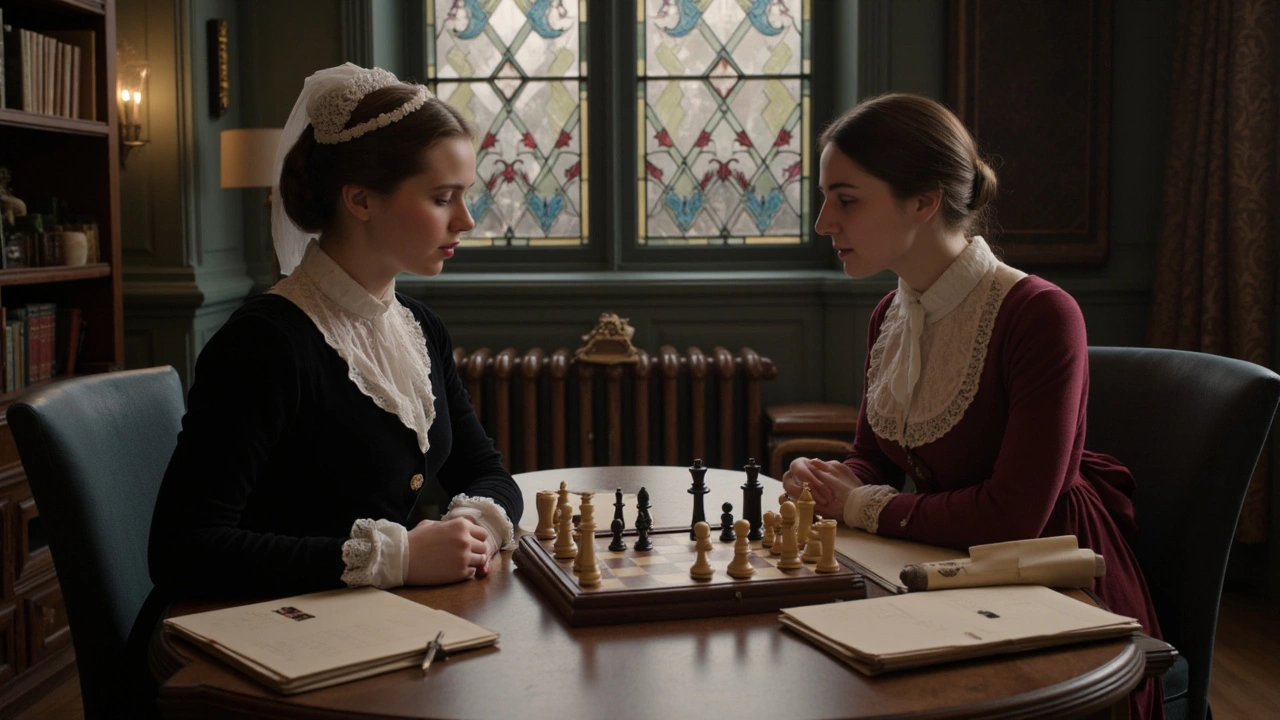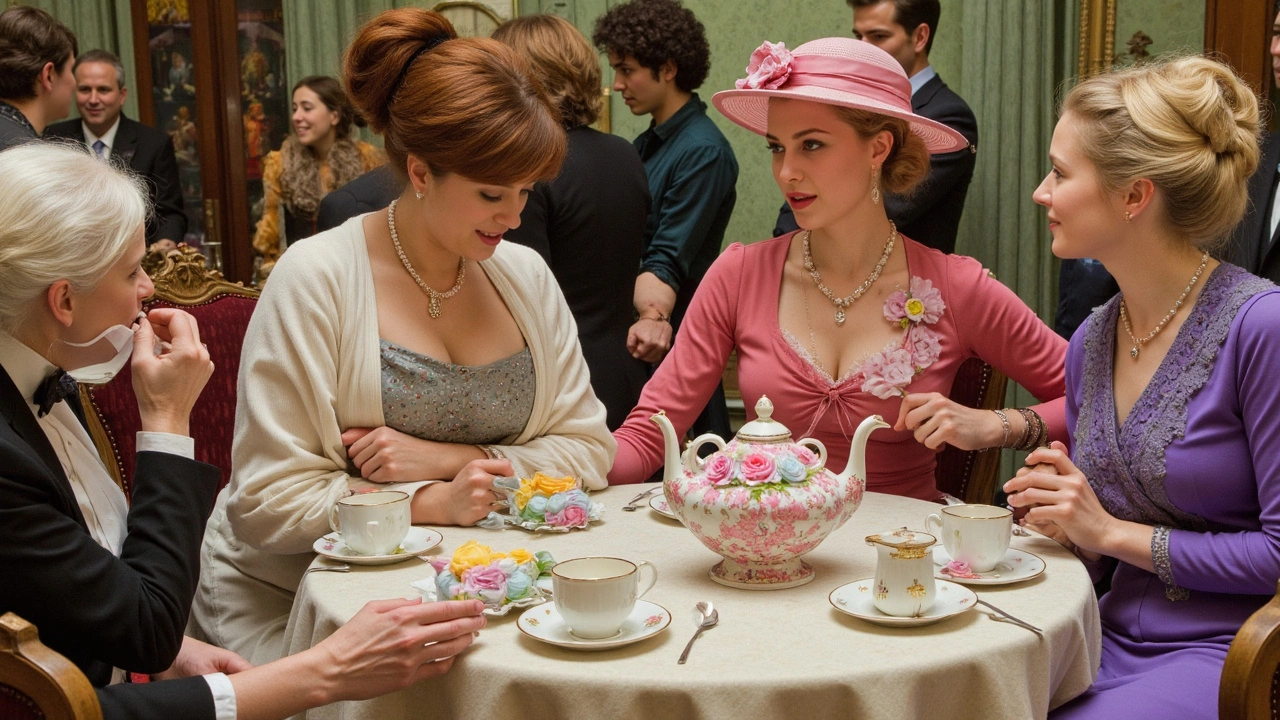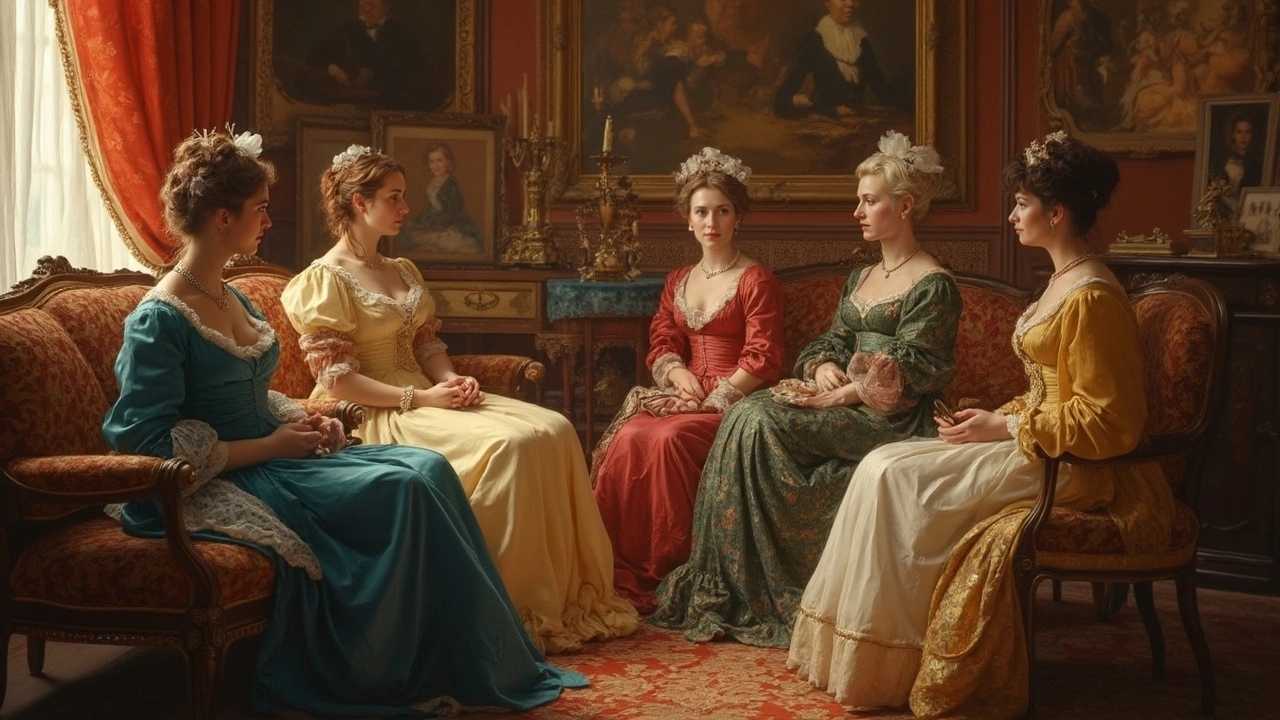How Courtesans Trained for Success: The Skills and Secrets Behind the Role

Most people imagine courtesans as glamorous figures, but behind those luxurious appearances was a ton of hard work. If you think charm and wit come naturally, think again—these skills were drilled into them day after day. Courtesans weren’t just pretty faces; they trained like social athletes, learning everything from languages to dance, fashion, conversation tricks, and how to read a room quickly.
Today, you might call it networking on steroids. If you ever wanted to learn how to stand out at any event, looking at what worked for courtesans gives real-life hacks. Their training focused a lot on observing and listening—skills that still make or break a first impression. So, let’s peel back the curtain: what did their training day look like, what specific skills mattered most, and how did they set themselves apart in a crowd?
- Direct Answer: Core Courtesan Training Methods
- Key Points: Essential Skills Every Courtesan Learned
- Comprehensive Guide: Step-by-Step Development
- Tips for Modern Success Inspired by Courtesans
- Frequently Asked Questions About Courtesan Training
Direct Answer: Core Courtesan Training Methods
Training as a courtesan was no walk in the park. It involved a mix of strict routines, real-world practice, and constant feedback from mentors. In cities like Paris or Venice during the Renaissance, many courtesans started learning the basics as teenagers. The famous French courtesan Ninon de l’Enclos once said,
"To please is a learned skill, not a gift you are born with."
So, what did their training actually look like? Here’s what set them apart from the average socialite:
- Conversation and Wit: They practiced banter and clever talk daily. Courtesans needed to be quick thinkers, able to shift topics without missing a beat, and always keep guests engaged.
- Languages: Top courtesans spoke at least two or three languages. During the 18th century in Venice, knowing French and Latin was the norm if you wanted to make it big.
- Manners and Etiquette: Courtly gestures, how to enter a room, when to make eye contact—all of this was drilled in. If you ever fumbled a greeting in front of a duke, your career could take a hit. They even rehearsed dinner conversation, knowing when to give compliments or crack a joke.
- Fashion Sense: They weren’t just wearing the latest trends—they made sure their look matched the crowd. Many took lessons in dressmaking and makeup, since styles could change overnight depending on the client or social event.
- Arts and Dance: Most courtesans played at least one musical instrument or had some basic singing skills. They trained in dance both for public balls and private performances.
If you’re into numbers, here’s a look at what an average week of training for a top courtesan in 18th century Paris looked like:
| Activity | Hours per Week |
|---|---|
| Conversation practice | 8 |
| Language study | 6 |
| Dance/music lessons | 6 |
| Etiquette drills | 4 |
| Fashion & grooming | 3 |
Mentoring played a huge role too. New trainees, often called "apprentices," shadowed older courtesans, picking up tricks in real-time settings. Feedback was blunt and constant—you’d know immediately if you slipped up. Some even had hand-written guides or little notebooks full of tips for handling tricky clients.
It’s not like modern school, but with a mix of role-playing, studying, peer review, and a whole lot of confidence-building, it did the trick. All this effort is what made a courtesan stand out in crowded ballrooms and private chambers alike, even centuries ago.
Key Points: Essential Skills Every Courtesan Learned
If you imagine a courtesan’s life was all about looking good, think again. What set them apart was how seriously they treated their personal growth. Let’s break down the real skills that were essential to their success—and why these still matter when it comes to social confidence today.
- Conversation Mastery: The ability to keep a conversation going (and interesting) was a make-or-break skill. Courtesans learned when to ask questions, toss in a clever joke, steer away from awkward subjects, or offer sincere compliments. They read up on current events and even politics, so they could keep up with any crowd.
- Language Skills: Knowing more than one language was often a must. French and Italian were especially popular with European courtesans. This made them valuable to high-status visitors and opened doors to more jobs, travel, and higher pay.
- Artistic Talents: Singing, playing an instrument, painting, and acting weren’t just party tricks. Courtesans practiced these constantly since it showed off their culture and made them great company at exclusive gatherings.
- Fashion Sense: These social experts kept up with clothing trends and grooming. If you wanted to get noticed by the right people, you needed to look the part—always. Many spent hours daily picking the right outfits and learning new beauty treatments.
- Etiquette & Manners: Even the best-dressed courtesan would get nowhere without the right etiquette. Knowing whether to speak or stay quiet, how to greet someone, and which fork to use mattered, especially in elite circles.
- Emotional Intelligence: This was the secret weapon. Reading someone’s mood, knowing when to push a joke, when to listen, or when to leave was trained into them as much as any practical skill.
Here’s a handy look at how this courtesan training stacked up with other professions at the time:
| Skill | Courtesans | Other Professions |
|---|---|---|
| Multilingual Abilities | Expected (2-3 languages common) | Rare, except for diplomats |
| Artistic Talents | Critical | Not required for most jobs |
| Social Etiquette | Daily focus | Mainly for upper class or court jobs |
| Fashion Sense | Essential | Not a work requirement |
| Networking Skills | Vital for success | Rare, unless in politics/business |
So, it wasn’t just about beauty; courtesans built a toolkit of real, practical skills. If you want to get ahead in any social setting, their playbook is full of solid, actionable takeaways.

Comprehensive Guide: Step-by-Step Development
Courtesans didn’t stumble into their roles by chance. Their daily routines looked a lot like intensive training camps. The first thing they tackled? Education. In places like Renaissance Italy or 18th-century France, young trainees usually started around age 12. They learned how to read, write, and speak at least one other language, since being multilingual was how they impressed clients from all over.
Next came performance. Trainers, sometimes older courtesans, taught singing, dancing, playing instruments, and even poetry recitation. This wasn’t just for show—these were ice-breakers at fancy dinners. Top courtesans could play a keyboard or quote a famous poem on the spot.
Appearance mattered too, but it wasn’t all about beauty. They studied fashion trends, personal grooming, and subtle makeup. Self-care wasn’t treated as an afterthought—it was scheduled into the day right beside language lessons.
But the real secret sauce? Social know-how. Trainees practiced conversation skills, learned not to interrupt, how to remember personal details about visitors, and how to steer topics to keep things interesting but classy. Here’s a quick look at the order in which most courtesans trained:
- Basic reading, writing, and language skills
- Music and dance lessons
- Etiquette, manners, and conversation practice
- Current events, culture, and basic philosophy
- Fashion, grooming, and health routines
This mix of practical and soft skills made them stand out from other entertainers or companions. In fact, a study of Venetian courtesan training (digging into old journals from the 1500s) showed most spent on average six hours a day on lessons—about as much as a modern high school student spends in class.
Keeping track of where they focused energy, here’s a breakdown from an old diary found in France:
| Training Activity | Hours per Day |
|---|---|
| Languages & Writing | 2 |
| Music & Dance | 1.5 |
| Conversation Practice | 1 |
| Etiquette & Social Skills | 1 |
| Fashion & Grooming | 0.5 |
The strongest skill that often set a courtesan apart? Adapting quickly to a new environment or guest. If you’re looking for a real takeaway for modern life, it’s this: work on your people skills and stay open to learning something new every day.
Tips for Modern Success Inspired by Courtesans
Ever wonder how courtesans managed to stay relevant, admired, and well-connected for so long? Their secrets go way beyond surface looks. A lot of what made them legendary translates straight into today’s world, whether you want to up your social game or make a crisp impression at work events. Here’s what you can borrow from their playbook for a modern edge.
- Master the art of conversation. Courtesans trained hard to become excellent listeners and engaging storytellers. In the modern world, active listening and asking good questions can help you stand out, especially in group settings or networking events. A Stanford survey found that people who ask follow-up questions are 60% more likely to be remembered after a first meeting.
- Keep learning new skills. The best courtesans spoke multiple languages, understood art, culture, and had at least one showstopper talent (like playing an instrument). Picking up a new language, digital tool, or hobby keeps you interesting—and competitive—in today’s job market.
- Dress for the role you want. Courtesans paid careful attention to their appearance, staying on top of trends in fashion and grooming. You don’t need designer brands, but dressing intentionally signals confidence and respect for the people around you.
- Read the room. Being able to sense moods, spot social cues, or notice when someone feels left out was a make-or-break skill in a courtesan’s kit. Practice emotional intelligence: pay attention to body language, tone, and group dynamics. It’s proven that people with higher EQ (emotional intelligence quotient) often move up faster in team environments.
- Keep your boundaries clear. Courtesans protected their time and energy, even when surrounded by powerful people. In today’s fast-paced world, knowing when to say "no" and setting healthy boundaries is a skill you won’t regret.
Check out how these classic courtesan strategies break down for success today:
| Courtesan Skill | Modern Equivalent | Impact |
|---|---|---|
| Fluent Conversation | Networking & Communication | Boosts relationships and work prospects |
| Multilingual, Multi-talented | Continuous Learning | Stays competitive and engaging |
| Trendsetting Style | Professional Appearance | Encourages trust and credibility |
| Social Awareness | Emotional Intelligence | Smoother teamwork and leadership |
| Clear Boundaries | Work-Life Balance | Reduces burnout, increases satisfaction |
If you can nail even half of these, you’re already ahead of the curve. Just like the courtesans of history, success often comes down to combining skills, self-awareness, and a bit of boldness to carve out your own space.

Frequently Asked Questions About Courtesan Training
Ever wondered what went into becoming a successful courtesan? You might be surprised by the range of things they had to learn just to survive in such a competitive space. Let's answer the burning questions people always have about courtesan training.
How long did it take to train as a courtesan?
Training could start as early as childhood, especially in places like Italy or Japan. Girls would spend several years learning core skills before they ever met a client. In many cases, the process lasted until their late teens. That’s years of hard work before they even started working independently!
What specific skills did courtesans have to master?
- Conversation and wit—making small talk or debating philosophy, depending on the guest.
- Language—many learned several languages for international guests.
- Dance and music—think flute, lute, singing, or just knowing all the latest steps.
- Art and literature—so they could impress cultured clients and join big discussions at salons.
- Dress and grooming—the right style could make or break a first impression.
- Manners and etiquette—they needed to fit in everywhere, from smoky taverns to palace halls.
Were courtesans self-taught or did they have teachers?
It was a mix. Some were mentored by other courtesans or older women in their family, while wealthier aspiring courtesans could afford private tutors for languages, music, or deportment. Formal training schools existed in places like Renaissance Venice, where they were called "scuole delle cortigiane."
How did training set them apart from regular companions?
Regular companions might know basic social skills, but courtesans had to work on a different level. Their real power came from being able to hold their own in political conversations and cultural debates, which made them welcome at royal courts or with powerful clients.
Did courtesans have exams or tests?
Not like modern school exams, but their skills were tested from day one. If you failed to impress a wealthy or influential guest, word got around fast and you could lose clients. Success really depended on your reputation and how well you handled yourself under pressure.
| Age | Skill Focus | Evaluation |
|---|---|---|
| 6-10 | Basic etiquette, language, music | Practice with teachers at home |
| 11-14 | Advanced conversation, dancing, fashion | Feedback from sponsors/mentors |
| 15-18 | Hosting salons, networking, high-level wit | First real engagements with clients |
Were there any modern skills inspired by courtesan training?
Absolutely. Many of the strategies for networking, reading people, and making strong first impressions have roots in their methods. Think about it—if you can walk into a room and make everyone feel comfortable or curious, that’s something courtesans practiced every single day.
